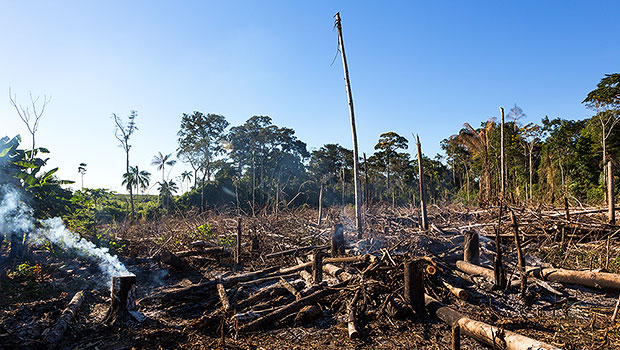Protecting existing forests and ensuring more trees are planted around the world has become one of the key battlegrounds in the fight against climate change.
Stopping deforestation is critical on several levels. For starters, trees act as carbon sinks, absorbing harmful pollutants and purifying the air we breathe.
They are also beneficial to our mental health and the overall biodiversity of the planet.
However, we lost 25 million hectares of forest in 2021 alone, releasing 10 gigatonnes of carbon dioxide into the atmosphere.
“Keeping forests standing is the fastest, cheapest, and most effective way for us to stabilize our climate,” said Nicole Rycroft, founder of the environmental non-profit Canopy.
There are numerous ways to accomplish this, including a recently passed EU law that prohibits the sale of products linked to deforestation on the EU market.
The EU deforestation legislation, according to Rycroft, sends a strong signal that “the window for business-as-usual logging is closed,” and supply chains must adapt accordingly.
The timber industry in the United Kingdom has also recently published a net zero roadmap, which aims to map and measure carbon emissions across the entire supply chain.
However, technology is increasingly being used to protect trees from illegal logging and the growing threat of wildfires.
As the fight against deforestation becomes more digital, satellite monitoring and sensors are now being deployed in many parts of the world.
The German early detection company Dryad, for example, aims to install 120 million solar-powered, early-warning sensors in forests around the world by 2030.
Carsten Brinkschulte, CEO of Dryad, stated that the company’s primary goal is to prevent man-made wildfires.
His company recently released a new report claiming that wildfires are responsible for up to 20% of global CO2 emissions and that this figure could rise to 30% by the end of the century.
According to Forbes, many people still believe that wildfires are carbon neutral, and that forests will naturally regrow and absorb the carbon lost during a fire.
That could theoretically happen over the course of 100 or 200 years, according to Brinkschulte, but climate change issues must be addressed now, or within the next two decades.
However, Brinkschulte believes that people continue to underestimate the impact of wildfires, particularly on human health due to air pollution and heat.
He also stated that human activity, both intentional and unintentional, is thought to be responsible for 85% of wildfires.
“We want to eliminate human-caused wildfires, but we can only do so if solutions are deployed on a large scale,” he said.
To that end, Dryad is which he claims could save 3.5 million hectares from burning while also significantly reducing carbon emissions.
“All countries must work together to share data and communicate the full impacts of wildfires to ensure the extent of the damage is fully understood,” he added.
The United Kingdom’s iov42 and Singapore’s Double Helix Tracking Technologies are testing a new digital platform to combat deforestation in commodity sourcing and supply chains, including timber.
The new platform employs distributed ledger technology to assist organizations importing into the United Kingdom in meeting the due diligence requirements established by the 2021 Environment.
This legislation seeks to establish clear statutory targets for natural world recovery in four priority areas: air quality, biodiversity, water, and waste.
Similar legislation to that of the United Kingdom will apply to organizations wishing to import into Europe under the EU deforestation law, and to those wishing to import into the United States of America under the proposed US Forest Act.
According to Dominic von Trotha Taylor, CEO and Chairman of iov42, it will provide organizations with the tools they need to meet sustainability goals.






